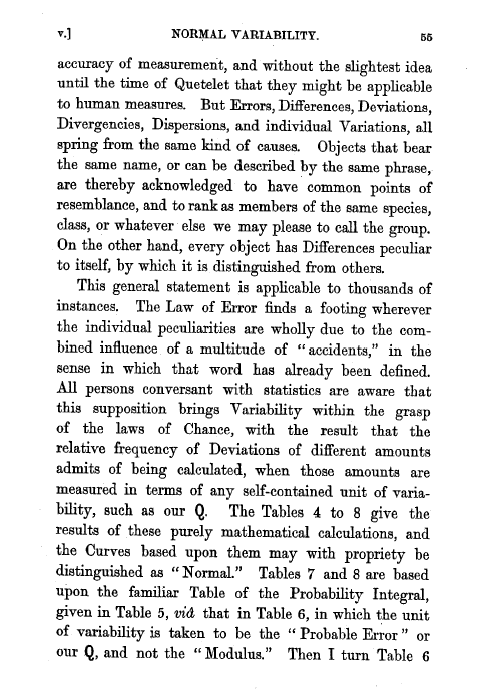V.] NORMAL VARIABILITY. 66
accuracy of measurement, and without the slightest idea until the time of Quetelet that they might be applicable to human measures. But Errors, Differences, Deviations, Divergencies, Dispersions, and individual Variations, all spring from the same kind of causes. Objects that bear the same name, or can be described by the same phrase, are thereby acknowledged to have common points of resemblance, and to rank as members of the same species, class, or whatever else we may please to call the group. On the other hand, every object has Differences peculiar to itself, by which it is distinguished from others.
This general statement is applicable to thousands of instances. The Law of Error finds a footing wherever the individual peculiarities are wholly due to the combined influence of a multitude of " accidents," in the sense in which that word has already been defined. All persons conversant with statistics are aware that this supposition brings Variability within the grasp of the laws of Chance, with the result that the relative frequency of Deviations of different amounts admits of being calculated, when those amounts are measured in terms of any self-contained unit of variability, such as our Q. The Tables 4 to 8 give the results of these purely mathematical calculations, and the Curves based upon them may with propriety be distinguished as "Normal." Tables 7 and 8 are based upon the familiar Table of the Probability Integral, given in Table 5, via that in Table 6, in which the unit of variability is taken to be the " Probable Error " or our Q, and not the "Modulus." Then I turn Table 6

